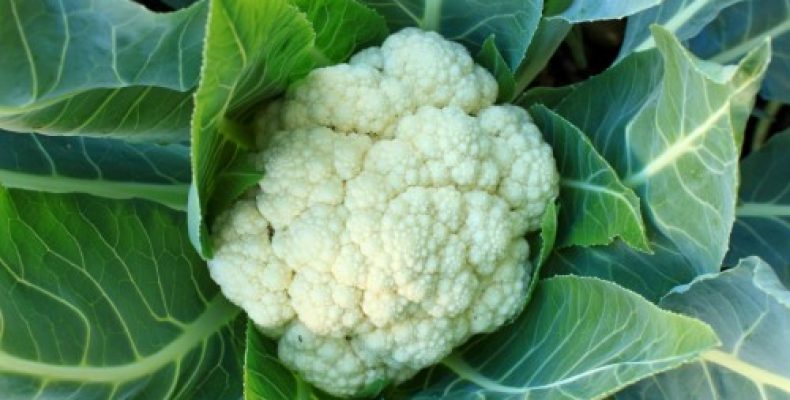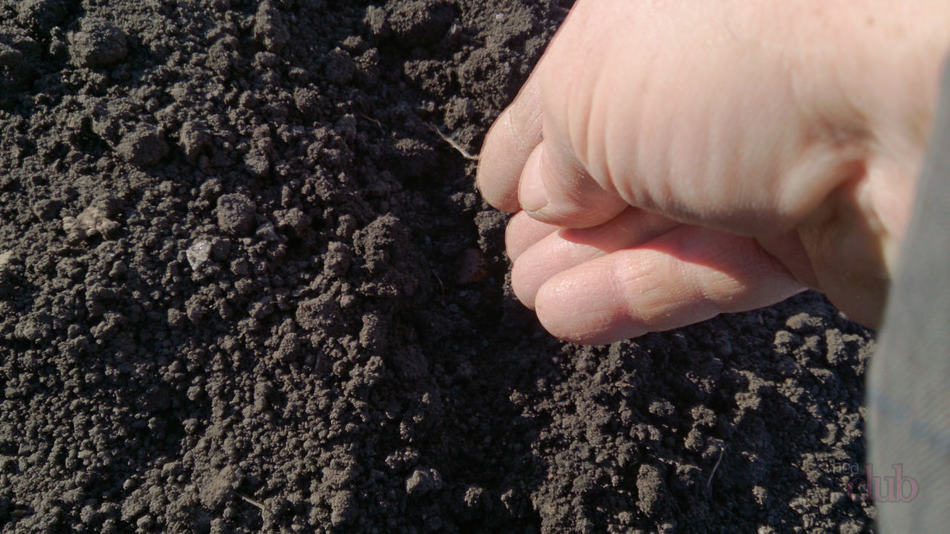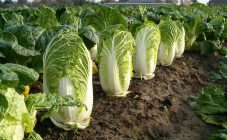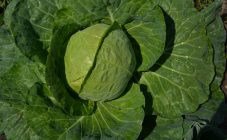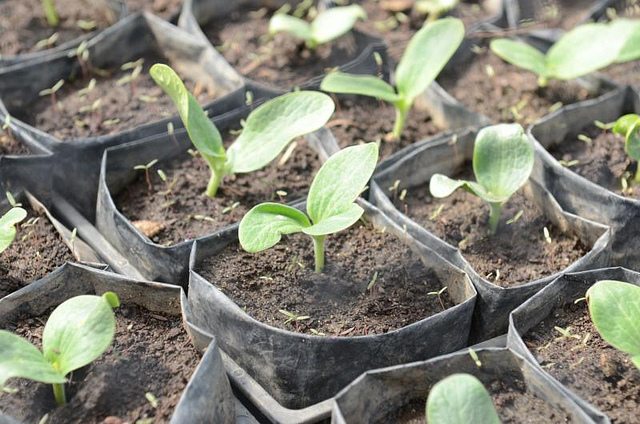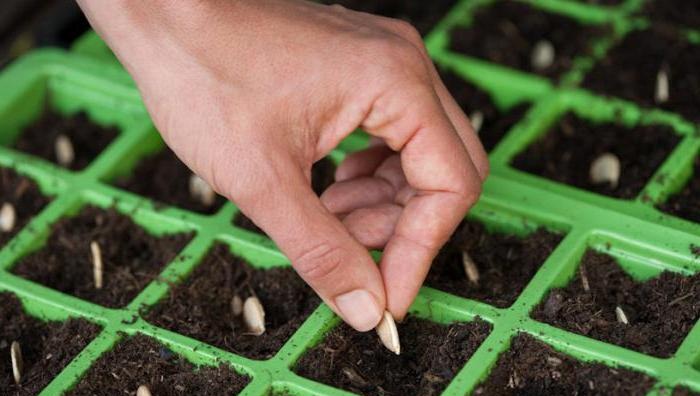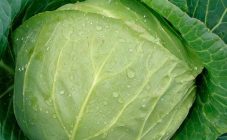Content:
Cauliflower is a healthy dietary vegetable, rich in fiber, surpassing white cabbage in nutrient content. Heads of cabbage contain many B vitamins and microelements, while being a low-calorie product. This culture has been known since the XI-XII centuries - it was grown in Spain, the Mediterranean, then in central Europe. In Russia, this vegetable began to be planted in the era of Catherine II. It is not at all difficult to grow cabbage in a summer cottage, you just need to know a few features of the agricultural technology of this annual plant.
Cabbage varieties
Cauliflower varieties are divided into early, middle and late varieties according to the ripening period. From the moment of planting the seeds to the ripening of the head of cabbage, it takes 100-125 days for the early cabbage, 126-135 days for the mid-ripening, and 145-170 days for the late cabbage. When choosing a variety for planting, you need to focus on the climatic features of the area: in the north of Russia, in the Leningrad region, it is better to grow early varieties, in Moscow, in the central regions - early and middle ones, for the southern regions, late varieties are also suitable. As a rule, many experienced gardeners know which varieties of cabbage to plant in a summer cottage.
Unfortunately, fake seeds of domestic and foreign companies are often found: cabbage grown from such seedlings either does not correspond to the variety, or does not produce a head of cabbage at all - all the work is down the drain! Therefore, for beginners to grow this vegetable, it is better to buy how many different species with unequal ripening times, carefully reading the instructions on the seed bag or using Internet reviews when choosing.
Vinson, Fremont, Movir 74, Koza-dereza, Snezhok are considered to be some of the most reliable varieties today. Hybrids often yield the best yield - F1 is always indicated next to their name.
At the same time, cabbage prefers high humidity, frequent abundant watering. If hot, dry weather falls during the formation of the head of cabbage, then the harvest is unlikely to be abundant: the head of cabbage will be small or not tied at all. To maintain moisture, the soil around the plants must be loosened and mulched so that a crust does not form, which prevents moisture from penetrating to the roots. However, it should be remembered that excessive soil moisture provokes rot, therefore, with a large amount of precipitation, it is better not to water the beds.
When the head of cabbage has tied up and has grown to the desired size, turning from greenish white, you need to break the leaves above the head, creating additional shading. So the head of the cabbage will slightly increase, moreover, it will be possible to avoid "pinning" - the inflorescence will not turn green, stretch, and become tough.
It is important to cut the cabbage heads on time. The correct fruit should be uniform in color (in accordance with the variety, for example, white), and the inflorescences should be of the same height. If they begin to elongate and turn green, it means that the head is "pinned", becoming overripe. The cabbage will taste harder.
Planting seeds for seedlings
Cabbage seeds do not germinate well in the open field, so they are always grown in seedlings.You can sow cabbage in a greenhouse, or you can grow it at home in containers.
As a rule, modern growers treat seeds in a special way, covering them with a green or orange substance, so such seeds do not need to be soaked before planting. If cabbage seeds are untreated, then before sowing they can be soaked for a day: put in a wet napkin or cloth and be sure to make sure that they do not dry out, otherwise cabbage seeds will lose their germination.
Sowing in a greenhouse should be chosen only if there is a constant opportunity to water the seedlings. If in early spring it is not possible to travel to the country house often, it is better to sow seeds on the windowsill in the apartment.
The timing of planting seeds for seedlings at home depends on the ripening time of the cabbage variety:
- early varieties are best sown in March;
- medium and late - from mid-April to mid-May.
It is better to sow cauliflower seeds in an unheated greenhouse a little later - in mid-April - early May. But it is important to know that these terms are approximate, so they can be shifted by 1-2 weeks depending on the region and weather conditions. Cabbage should be planted in open ground 1-1.5 months after sowing for seedlings. Therefore, if the winter is long and the snow will definitely not melt until the second half of April, planting seeds can be postponed for a couple of weeks.
Sometimes they practice planting seeds at different times in order to get a fresh harvest during the summer and early autumn. The same result can be achieved by sowing several varieties at the same time with different ripening periods.
Any ordinary seedling soil from a garden store is suitable for planting seeds. If the soil is prepared on its own, then before sowing the seeds, it must be disinfected by steaming in a colander (the earth is put on cheesecloth in a colander, placed in a boiling pan) or by roasting in the oven. Disinfection will reduce the likelihood of the spread of mold and fungal diseases that plague cabbage seedlings.
If it is not possible to plant seedlings in separate pots, then you can sow cabbage in a box. To do this, you need to make shallow grooves in the ground, lay out the seeds at a distance of 3-5 cm, sprinkle them with soil and cover with lutrasil. Planting can be opened only after the emergence of seedlings. In this case, small plants with two pairs of leaves are best dived into separate pots. To save time, so as not to fiddle with the pick, it is better to immediately increase the distance between the seeds.
Cabbage shoots will appear in 1 week. They need to be kept for 4-5 days at a cool temperature of about 10 ° C. Then gradually increase it to 15-18 ° C (for example, seedlings can be kept in an apartment on a windowsill under a window).
Planting cauliflower in open ground with seedlings
When choosing a site for planting cabbage in open ground, it must be borne in mind that all cruciferous plants are bad predecessors for this culture: cabbage, beets, turnips. These plants have common diseases and pests. The plant prefers soil rich in nutrients, therefore, before planting in open ground, the soil in the beds must be specially prepared: add ash containing potassium and humus rich in nitrogen. You can add granules of superphosphate at the rate of 70 g per 1 m².Then the soil needs to be dug well.
It is better to plant cauliflower seedlings in open ground in cool, calm weather so that the plant takes root better. It is necessary to make small holes with a shovel up to 10 cm deep - 1/3 of a shovel bayonet (depending on the size of the seedlings). The distance between the holes should be about 40 cm, and between the rows - 50 cm. At the bottom you can put a little humus, 5-7 g of nitrophosphate. Each hole should be well spilled with water.
Young cauliflower plants must be removed from the pot carefully so as not to break the stem and destroy the earthy ball, damaging the roots. The plant is placed on the bottom of a hole made in the garden bed, carefully covered with earth. The neck of the cabbage needs to be slightly deepened, to compact the soil around the plant. The seedlings should be in the center of a small "crater" - holes with sides to make watering easier. After transplanting into open ground, cauliflower must be carefully watered, if possible, spray with epin. This immune stimulant will help the plant to heal faster after transplanting. Epin is always recommended to be used if the seedlings have been frozen, have suffered from fungal diseases, a few days after the transplant, they began to change color (darken or turn yellow) and shed their leaves.
Top dressing
Cauliflower responds positively to fertilization, so it is better to feed the plants 3-4 times per season. 2 weeks after planting in open ground, cabbage can be watered with mullein infusion, rich in nitrogen. This element is necessary for building up leaf mass before flowering.
Nitrogen fertilizers must be applied before the formation of the head of cabbage, but very carefully, since with an excess of this trace element, the head of the cabbage will be loose or not tied at all. Nitrogen fertilization can be done twice. It is better not to add nitrogen before flowering, because the cabbage will "go into the leaves" and will not form a head of cabbage.
During the formation of the cabbage head, you need to use phosphorus and potassium fertilizers: 80 g of superphosphate and 20 g of potassium per 10 liters of water. For a good setting of heads of cabbage, the seedlings grown during a month in the open field can be fed 1-2 times with boron. You can also sprinkle with complex fertilizers containing copper, molybdenum, magnesium.
Growing cabbage at home
Home gardeners grow cauliflower at home on windowsills and balconies. The harvest in this case can be obtained purely symbolic. Agricultural technology in this case differs little from the rules for growing cauliflower in the open field described above: the plants should be in a well-lit place, in the south, south-west or southeast window. It is necessary to maintain high humidity. Unfortunately, cauliflower gives small heads of cabbage in apartment conditions, sometimes leaves the owners completely without a crop. Therefore, before planting this plant at home, it is better to compare the time and labor that will be spent on growing with the final modest result.
The nuances that it is desirable to observe when planting cauliflower in open ground with seedlings seem numerous and difficult only in the description. In practice, growing this vegetable is not difficult at all. In conclusion, it is worth emphasizing once again that much here depends on the quality of the seeds and seedlings, since planting varieties that are not suitable for the area or low-yielding plant varieties will nullify all the work of the summer resident. Therefore, it is worth taking a closer look at the choice of planting material and timely planting of seedlings in the ground.
